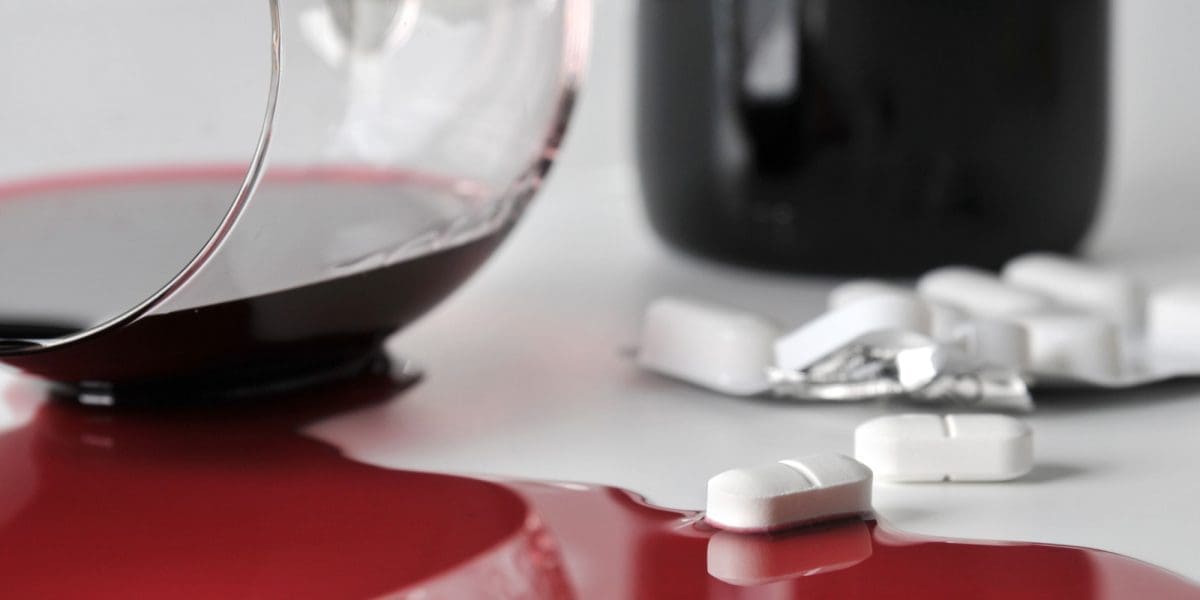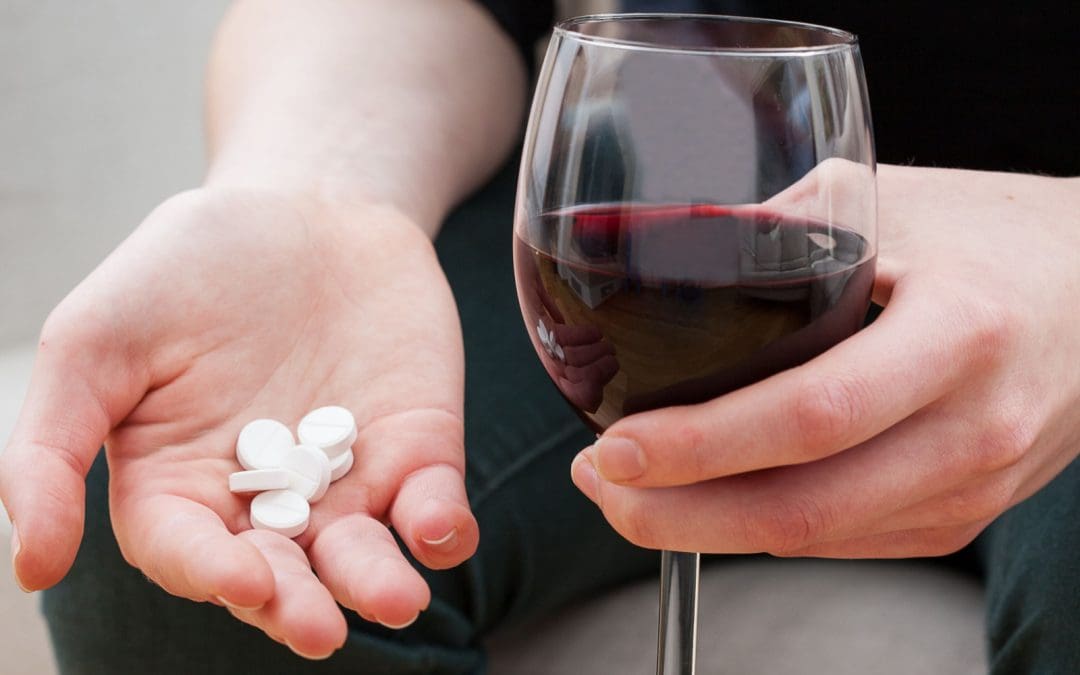Oxycodone is a semi-synthetic narcotic used for moderate to severe pain relief. While on oxycodone, individuals should not take street drugs or drink alcohol. This is because combining oxycodone and alcohol increases the risk of dangerous, life-threatening side effects.
Instead, it is much safer to take prescription opioids like oxycodone exactly as directed by medical professionals. If someone takes oxycodone more frequently, in higher doses, or for longer than prescribed, they increase their risk of developing an opioid addiction.
Similarly, alcohol is an addictive substance that should be consumed in moderation. Because it interacts poorly with many types of drugs, it is better for someone to avoid it entirely for the duration of their prescription.
Fortunately, programs exist to help those who live with drug addictions and alcohol abuse. If you are thinking about mixing oxycodone and alcohol, or you suspect you may have developed an addiction to either, continue reading. We will discuss why you should not mix alcohol and drugs, as well as how you can get help if you already have.
How Does Oxycodone Affect the Brain?

Before we analyze how oxycodone and alcohol interact, it is important to recognize that both affect the brain in different ways. Oxycodone is a type of prescription opioid used to treat individuals with moderate to severe pain. Like other opioids, oxycodone binds to receptors in the brain as it travels through the bloodstream.
Normally, these opioid receptors help manage the body’s response to pain. Naturally produced opioid substances within the body slot into the receptors like a key into a lock. When this happens, it prompts the same chemical processes that occur when someone engages in pleasurable activities like eating, exercise, or sex.
Oxycodone and other externally provided opioids work in the same way. By binding to opioid receptors, they can trigger the same pain relief functions. This makes opioid painkillers one of the most effective options for someone experiencing severe or chronic pain.
In addition to relieving pain, oxycodone can also cause side effects like drowsiness, flushing, mood changes, and headache. Oxycodone and alcohol share many of these potential side effects, which contributes to the dangers of mixing them together.
How Does Alcohol Affect the Brain?
Oxycodone and alcohol work in different ways to influence someone. Alcohol is a central nervous system depressant that affects almost every part of the body, including the brain. As alcohol travels through the bloodstream, it blocks communications between certain cells called neurons.
These neurons typically help with cognitive and physical functions like balance, memory, judgment, and speech. However, since alcohol inhibits their ability to convey messages to each other, these functions end up impaired as a result.
Alcohol impairment can take many different forms. In addition to impaired motor, speech, and overall cognitive abilities, it often causes symptoms like uncontrolled eye movements, feelings of relaxation, nausea, and vomiting.
As mentioned above, oxycodone and alcohol also have a few other side effects in common. Just like oxycodone, alcohol can cause someone to experience sleepiness, mood swings, memory problems, and dizziness.
How Do Oxycodone and Alcohol Interact?
Now that you understand how oxycodone and alcohol work independently, we can discuss what happens when someone takes them at the same time. Mixing alcohol and drugs is often a dangerous endeavor. Therefore, those with prescribed medications should always take them as instructed by medical professionals and without additional substances.
Combining alcohol with drugs can trigger a variety of side effects, ranging from minor unpleasantries to potentially fatal impairments. The National Institute on Alcohol Abuse warns that, depending on the type of drug someone mixes with alcohol, they may experience anything from drowsiness to heart attacks.
When it comes to combining oxycodone and alcohol, several potential problems arise. For example, taking them together can cause symptoms like:
- Nausea/vomiting
- Fatigue
- Respiratory depression
- Liver damage
- Slow heart rate
- Dizziness
- Unusual behaviors or mood changes
- Memory problems
- Impaired motor control
- Seizures
- Coma
In addition, mixing oxycodone and alcohol places someone at an increased risk of overdose and alcohol poisoning. Perhaps most notably, alcohol can prevent common overdose medications like Naloxone (Narcan) from working effectively. In other words, overdosing on oxycodone after drinking alcohol is much more likely to be fatal.
Furthermore, someone may not process how intoxicated they are after consuming both oxycodone and alcohol. This can lead to taking more of either substance in what could become a lethal dose. As the effects of both substances feed into each other and become more extreme, the risk of fatal consequences increases as well.
Oxycodone and Alcohol Addiction

Taking oxycodone and alcohol at the same time does not result in a better experience. It may be more intense, but only in harmful ways that could cause permanent damage or even death. Therefore, people with prescribed opioids should avoid drinking alcohol for the duration of their prescription. They should also take oxycodone exactly as prescribed.
When these things don’t happen, someone may develop an opioid addiction or patterns of alcohol abuse. Addiction can wreak havoc on all aspects of someone’s life, but luckily, there are ways to treat it and minimize its impact.
Detox from Oxycodone and Alcohol
Someone whose substance use has evolved into addiction must first detox from oxycodone and alcohol. This process allows the body to recover from addiction on a physical level. Medical detox programs provide the space and support for someone to do so safely.
During a medical detox, a team of licensed physicians and addiction specialists monitor patients throughout the entire process. This team works to soothe any withdrawal symptoms as much as possible and ward off potential complications.
Dual Diagnosis
After detoxing from oxycodone and alcohol, someone may enroll in a rehabilitation program for additional support. The Willough at Naples offers a dual diagnosis program to meet this need. Dual diagnosis refers to a type of treatment that helps individuals with co-occurring mental health and substance abuse issues.
Over half of individuals with an addiction have a mental health problem at the same time, making dual diagnosis a valuable focus to have. The dual diagnosis program at The Willough at Naples utilizes numerous evidence-based treatment options, including:
- Psychiatric evaluation
- Individual therapy
- Group therapy
- Recreational therapy
- Family therapy
- Medication management
- Links to community resources and support groups
- Discharge and relapse prevention planning
The above activities teach important coping skills like healthy communication, emotional attunement, and time management. While these may seem generic at first, they help people with oxycodone and alcohol addictions re-establish a sense of stability and control. We want our patients to succeed for years to come, and we accomplish that by equipping them with life skills that will go on to transcend treatment.
Oxycodone and Alcohol Addiction Treatment in Naples, Florida
The Willough at Naples is a mental health and addiction rehab center with over 30 years of treatment experience. We are well-versed in treating individuals with conditions like depression, anxiety, and bipolar disorder, as well as those with addictions to illicit drugs, prescription medications like oxycodone, and alcohol.
We want to hear your story and offer our assistance in writing its next chapter. It is never too late to get help. If you battle oxycodone and alcohol abuse, please reach out to us today. You can contact a member of our admissions team by calling (239) 688-3063 or submitting a confidential contact form online.
We can connect you with the support and resources you need to recover. With The Willough of Naples in your corner, long-term sobriety, stability, and happiness can all become a reality.

